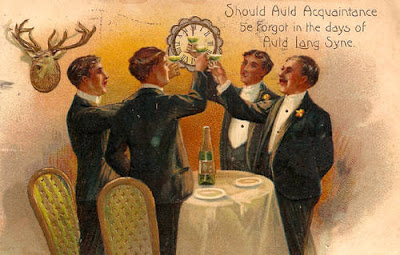Over the past few Christmastides I’ve posted entries about crèches – those traditional tableaux that retell the story that is the Christian origins of the Feast Days. In my travels I’ve always found a certain comforting familiarity in seeing the figures of Mary, Joseph and the Christ Child in places as far away as Saigon and as nearby as Sussex Drive. As the location changed so did the world surrounding those three figures – often touching reflecting the lives of the people and place.
In our own household there are three nativity scenes that have been bought in our travels and set up at various times in our households in Ottawa, Mexico, Cairo, Chicago, Warsaw, Aylmer and Roma. Limited surfaces in the new apartment have meant that again choices had to be made. Sadly
the charming corn husk figurines, including a slightly wall-eyed wise man, of the crèche from New Mexico have been left in their box to be used another time. The
carved szopka I bought in Warsaw – though not the traditional colourful to the point of gaudy scene – has found a spot on a credenza in the living room. And I was able to find a place for the exuberance of Emanuele Luzzati’s
pop-up presepe – a Genovese’s take on the traditions of Napoli. Which is probably where this whole obsession - and yes I admit it is an obsession - with crèches came into being.
 |
| The Metropolitan Museum of Art in New York continues its tradition, begun in 1957, of displaying the incredible collection of Neapolitan presepe figures collected by the late Loretta Hines Howard. Well over 200 18th century figures from her collection are displayed on and around the gigantic tree set in front of the enormous medieval choir screen. |
I first became acquainted with the elaborate crèches of Napoli when, sometime in the early 70s, the late lamented
Gourmet Magazine featured the
Christmas tree at the Metropolitan Museum in New York on is cover and in its lead article for Christmas. The elaborately robed angels watching over an even more elaborately costumed Mary and Joseph caught my, at the time decidedly baroque, fancy. I recall immediately wanting to do an angel theme on the tree that year but that was long before angels became ubiquitous in Christmas stores so I settled for the somewhat less heaven-bound theme of toy soldiers.
A few years later my friend Naomi and I made a day trip to New York to see a matinee of
Amedeus with Ian Mckellan, do a bit of shopping at Bloomies and see the tree. Set against the imposing choir screen it proved as magical as I had imagined from the photo and word picture that Gourmet had painted. It was only later that I discovered the story behind the elaborate display - how the humble presepe with its painted terra cotta figures that appeared in almost every Napoletano home had been elevated to a high art form by King Ferdinand in an effort to foster industry and the arts in his kingdom.
Though I
saw many manger scenes during the four Christmases I spent in Italy I was never able to get to Napoli over the holidays so missed seeing the hundreds of public - and for the privileged, private - presepe on display throughout that most marvellous of cities. And on the three occasions I did get there I never did make it to
Via San Gregorio Armeno - the street of the presepe makers. But that just might have been a good thing - I'm sure the temptation to recreate my own presepe Napoletano would have been far to strong.
Knowing my fondness for these little scenes and I'm sure knowing that I wouldn't find too many here in Ottawa my friend Marco thought he'd share his presepe with me, if only digitally. In his apartment in Trastevere he has a traditional Napoletano nativity scene, given to him by his mother and father as a reminder of the traditions of his childhood. Not the elaborate-gowned and bejewelled figures of that courtly New York tree nor the resin creations sold today but the simple painted terra cotta figures that you would find in many homes near Piazza San Carlo or off Via Toledo in earlier times. It is wonderful to share it with him if only at a distance - mille grazie caro.


But in common with all those nativity scenes I love so much - the crèches, szopka, presepe call them what you will - there is world outside the stable. Recognizable figures people the little village - more Campania than Bethlehem - the shepherd boy, the bagpipe player, the fishwife and - perhaps my favourite - the sleeping shepherd who is missing the great events taking place nearby. Perhaps that is what gives these scenes their charm - that as a great event is taking place people are going about their business - some stopping, other continuing on with their daily routine and a few sleeping and missing the whole thing. In other words - life!
A few other entries I've posted over the past few years on nativity scenes:
The Presepe Maker
A Procession of Presepe
A Polish Presepe
Borgo Nights
21 dicembre/December - San Pietro Canisio
















































